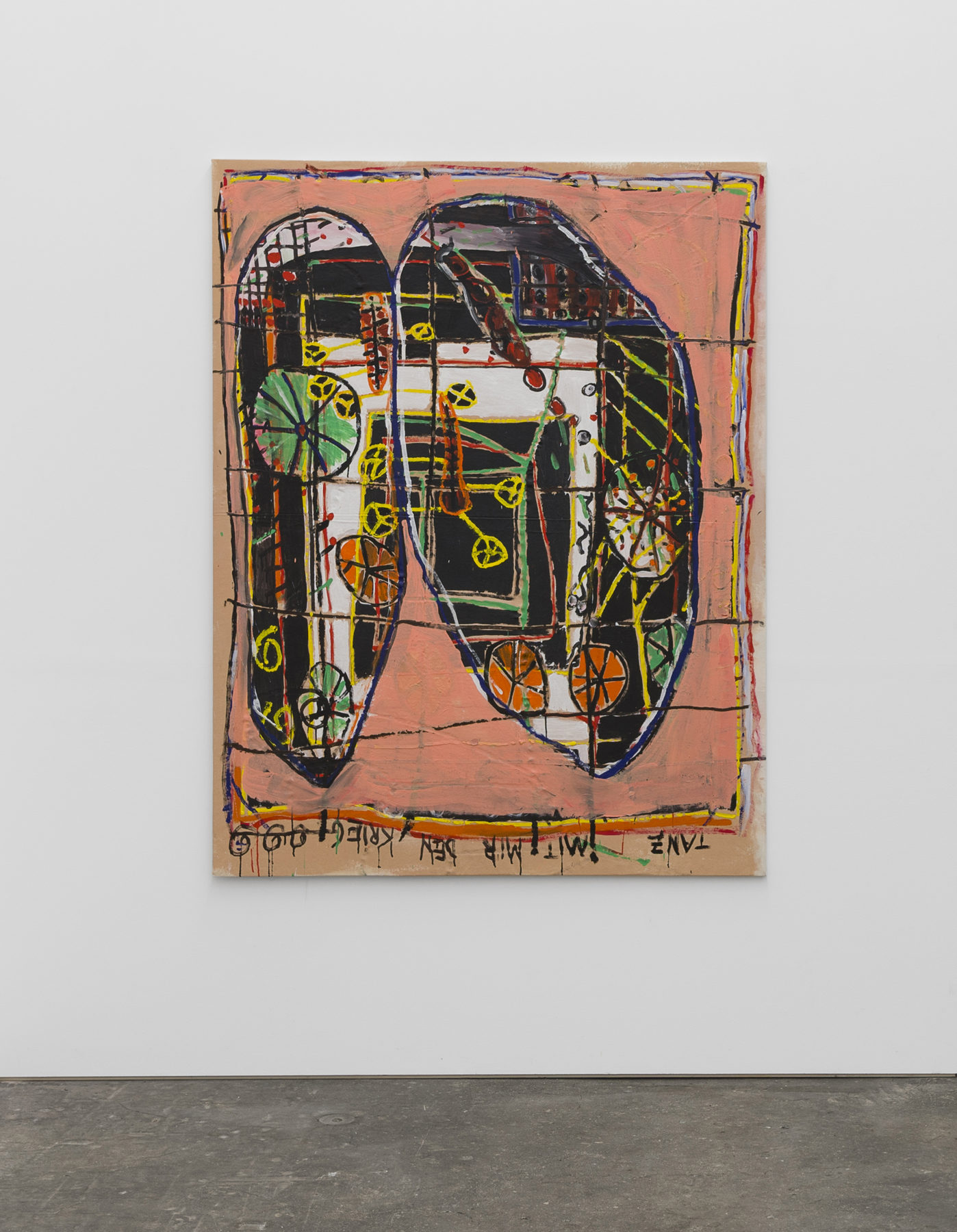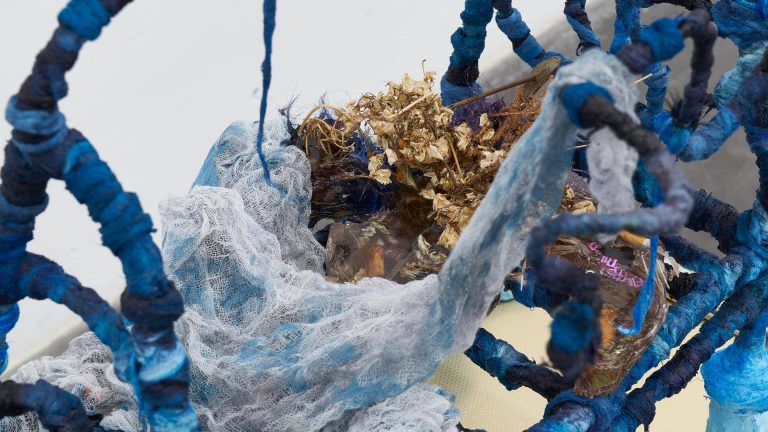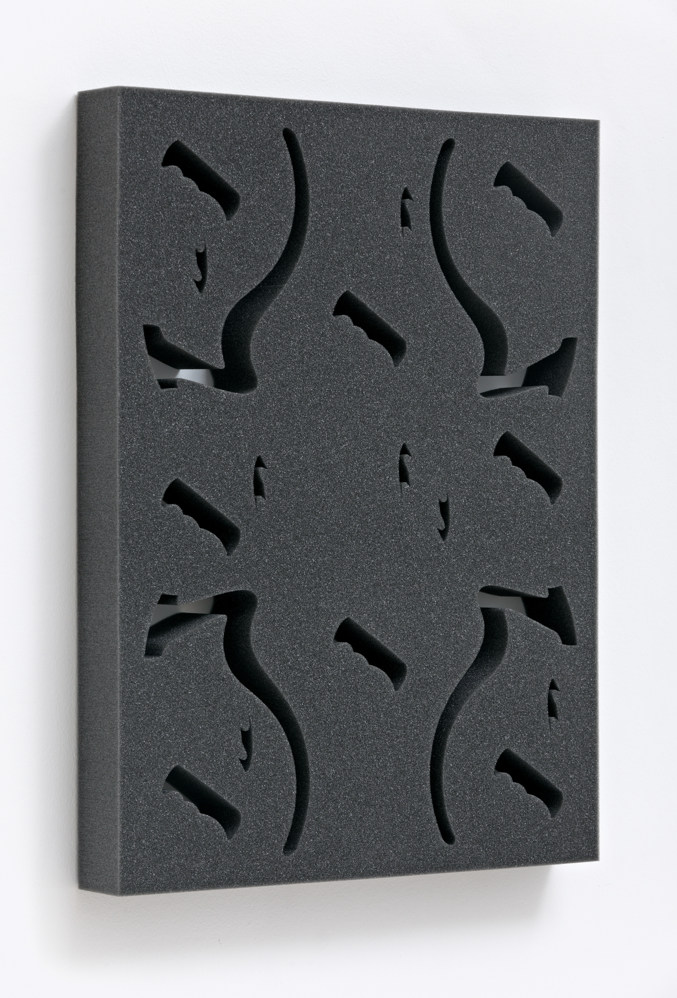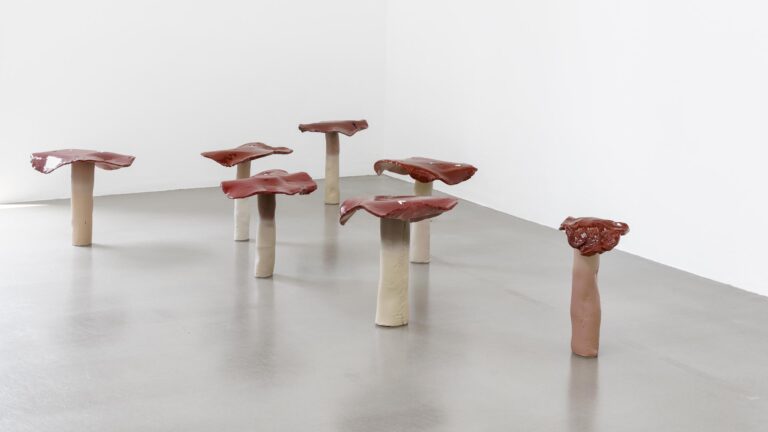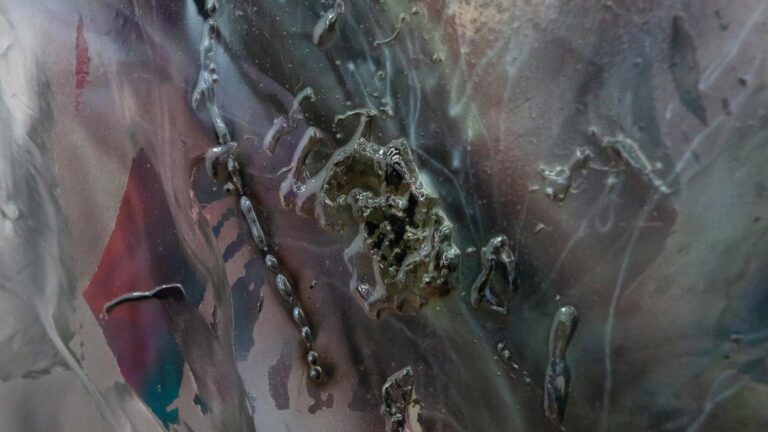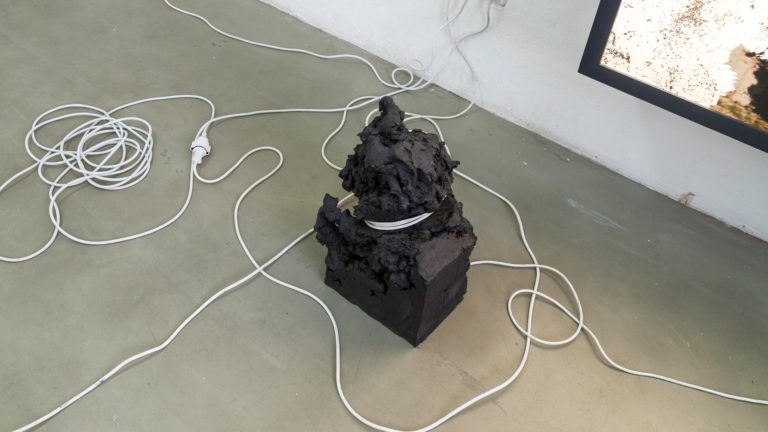Artist: Sophia Domagala
Exhibition title: The mirror is my mother
Venue: STUDIO PICKNICK, Berlin, Germany
Date: February 23 – March 16, 2019
Photography: all images copyright and courtesy of the artist and STUDIO PICKNICK, Berlin
Most of Sophia Domagala’s mostly large-format may seem wild and confusing at first glance. They exude a peculiar, physical presence sustained by a sense of arbitrariness, by their complexity and colour dynamics. Nevertheless, they contain no frills, nothing that’s not strictly required – everything focuses on the essentials.
It helps to take a step back and examine the origins of this style of painting; one that doesn’t start from an explicit concept, but flirts with a form of seeming naivete. Yet such command of the laid-back elegance of dilettantism takes perfect mastery of the painterly gesture – and what does this “gesture“ entail?
In Roland Barthes‘ writing on Cy Twombly (Merve, 2003), he states that the gesture is “something like the encore of an act”. When the actual act and action is over, the gesture unites the “indefinite and infinite sum of reasons, drives and idlenesses that surround the act with an atmosphere” (p. 11). In a prior series, Sophia had painted delicate plant arrangements. Here, leaves creep across the canvas, lending the untreated substrate its structure and infusing it with a sense of three-dimensionality. All it takes to construct an entire mental world is the sketched allusion of a jungle. Because this is not about “seeing, thinking, tasting the product, but about the motion that has caused it to look again, to identify or even to enjoy it.” (p. 16). Thus turning the images into trigger points for specific ideas, memories and possibilities.
In the new series, the supposed unambiguousness of Sophia’s leaves and tendrils has made way for an ostensible chaos that, at second glance, reveals structures, patterns and multi-faceted meaning. A meaning not anchored in the works from the first moment and brushstroke, but one that results from Sophia’s unprocessed approach to the canvas. Unfiltered. This approach also explains the words and script that find their way into her work. After all, they, too, are nothing but shapes in the stream of thoughts that navigate their own, whirling ether each and every day. The mind doesn’t differentiate between word and painterly gesture.
And that’s the source of the elegance: the descending thought, suggested by the brushstroke. Patterns and structures that form and dissolve – only to reform anew. In Sophia’s works, writing has no home or frame, dissociating its contents even more from sentence structures and familiar, apparent meaning. According to this pattern, the use of colour as a means and never an end in itself is only consistent. Everyday, banal, exciting and curious elements are allowed to enter the work – here, a homage to Isa Genzken sits side-by-side with a good joke on a palm-lined beach, a hare or a Christmas tree.
The pictures pose a challenge we should accept. Because they are not self-absorbed, but encourage exchange with the viewer. With us. They talk through their titles and the language they seem to contain quite naturally. “The Mirror is my Mother” also addresses the sensual notion of “showing yourself”, expressed via symbols, hidden cyphers and winding paths that keep reforming anew and prevent any sense of mental standstill. Although the paint is static and no longer changing once it has been applied to the canvas, the thoughts lashed in place by the gesture nevertheless remain in constant flux. These are gestures full of hope and opportunity, full of vigour and vitality. Gestures that hint at all those things we think we know and – precisely for this reason – could never ever really know. Shifting moments of thought that pave their path through the motions of the brush.
At the same time, “The Mirror is my Mother” transcends mere painting. Sophia also shows ceramics that employ a very different language. Where painting can be ambiguous, these sculptures are entirely concrete. Intertwined hands, protectively placed on top of one another, lost in an endless embrace. They offer a counterpoint to the paintings’ physicality; they appear introverted, almost quiet. Here, the allusion gives way to consolidation and a gesture to the gesture, its execution. The gentleness and tenderness inherent in the material’s fragility remains self-contained: Where painting involves the observer, the depicted scene’s potential intimacy turns him into a voyeur.
Text: Laura Helena Wurth
Sophia Domagala, The mirror is my mother, 2019, exhibition view, STUDIO PICKNICK, Berlin
Sophia Domagala, The mirror is my mother, 2019, exhibition view, STUDIO PICKNICK, Berlin
Sophia Domagala, The mirror is my mother, 2019, exhibition view, STUDIO PICKNICK, Berlin
Sophia Domagala, The mirror is my mother, 2019, exhibition view, STUDIO PICKNICK, Berlin
Sophia Domagala, The mirror is my mother, 2019, exhibition view, STUDIO PICKNICK, Berlin
Sophia Domagala, Ich habe eine tiefe, tiefe Angst, 2018, Oil and acrylic on canvas, 175 x 145 cm; The mirror is my mother, 2018, Oil and acrylic on canvas, 180 x 140 cm
Sophia Domagala, Verlorene Lebensmühe, 2018, Oil and acrylic on canvas, 172 x 158 cm; Apparatur der eigenen Unzulänglichkeit. Danke Isa für den Weltempfänger, 2019, Oil and acrylic on canvas, 177 x 146 cm
Sophia Domagala, Ohne Titel, 2019, Glazed clay, 25 x 10 x 12 cm
Sophia Domagala, Ein guter Witz am Palmenstrand, 2019, Oil and acrylic on canvas, 171 x 209 cm
Sophia Domagala, Tanz mit mir den Krieg, 2018, Oil and acrylic on canvas, 180 x 140 cm
Sophia Domagala, Das Angenehme dieser Welt, 2018, Oil and acrylic on canvas, 175 x 145 cm

